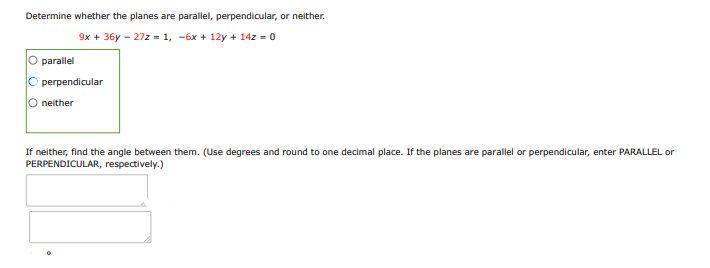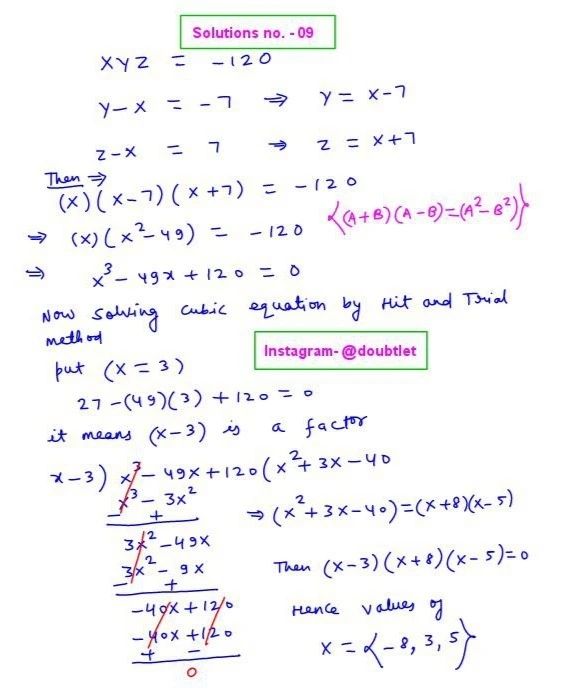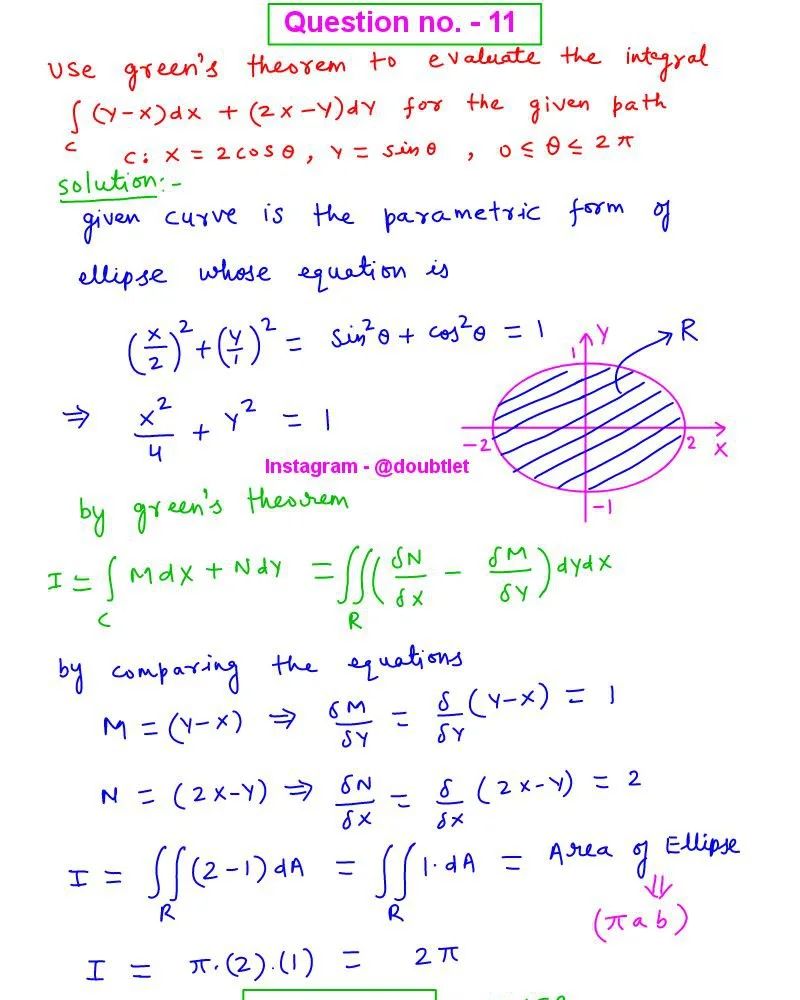









Question :
Determine whether the planes are parallel, perpendicular, or neither:
- parallel
- perpendicular
- neither
if neither, find the angle between them. (use degrees and round to one decimal place. if the planes are parallel or perpendicular, enter parallel or perpendicular, respectively.)

Solution:

Neetesh Kumar | December 16, 2024
Calculus Homework Help
This is the solution to Math 1C
Assignment: 12.5 Question Number 22
Contact me if you need help with Homework, Assignments, Tutoring Sessions, or Exams for STEM subjects.
You can see our Testimonials or Vouches from here of the previous works I have done.
Step-by-step solution:
Step 1: Identify the normal vectors of the planes
The general equation of a plane is given by: where the normal vector to the plane is .
-
For the first plane , the normal vector is:
-
For the second plane , the normal vector is:
Step 2: Check if the planes are parallel
Two planes are parallel if their normal vectors are scalar multiples of each other. To check, compare and :
To be scalar multiples, the ratios of corresponding components must be equal:
The ratios are not equal, so the planes are not parallel.
Step 3: Check if the planes are perpendicular
Two planes are perpendicular if the dot product of their normal vectors is zero. Compute the dot product:
Simplify step by step:
Since the dot product is zero, the normal vectors are perpendicular, and therefore the planes are perpendicular.
Final Answer:
The planes are
The angle between
Please comment below if you find any error in this solution.
If this solution helps, then please share this with your friends.
Please subscribe to my Youtube channel for video solutions to similar questions.
Keep Smiling :-)
Comments(0)



Leave a comment